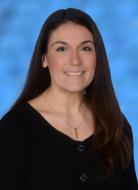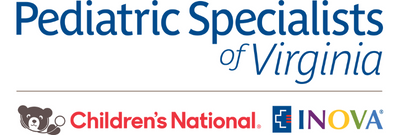Anastasia Grivoyannis, MD


Fellowship: Children’s Hospital of Philadelphia (2017)
Residency: New York Presbyterian Hospital–Cornell (2016)
Internship: University of Washington Affiliated Hospitals (2012)
Medical School: Weill Cornell Medical College (2011)
Undergraduate: Cornell University (2006)
Foundation for Anesthesia Education and Research (FAER) Resident Scholar (2014)
Merck Index Award for Outstanding Achievement in Chemistry (2006)
Grivoyannis AD, Tangel V, Lien CA. Vigilance: the behavioral impact of quantitative monitoring on administration and antagonism of neuromuscular blocking agents. Journal of Clinical Monitoring and Computing. 2022 Aug;36(4):1043-1051.
Kato MA, Zurakowski D, Adams A, Soelberg J, Staffa SJ, Bradford VA, Efune PN, Rodgers McCormick ME, Grivoyannis AD, Rossman Beel E, Correll LR, Cheon EC, Tan GM, Thomas JJ, Fernandez AM, Teng HC, Khanna N, Raman VT, Brzenski AB, Frugoni BJ, Sheth MM, Rugnath RM, Meier PM. Prevalence of COVID-19 and Risk Factors for Infection Among Pediatric Anesthesia Patients: A Report from the PEACOC Research Network. Anesthesia and Analgesia. 2022 Oct 21.
King MR, Staffa SJ, Stricker PA, Perez-Pradilla C, Nelson O, Benzon HA, Goobie SM; Grivoyannis AD in Pediatric Craniofacial Collaborative Group. Safety of antifibrinolytics in 6583 pediatric patients having craniosynostosis surgery: A decade of data reported from the multicenter Pediatric Craniofacial Collaborative Group. Paediatric Anaesthesia. 2022 Dec;32(12):1339-1346.
Maiga H, Grivoyannis AD, Sagara I, Traore K, Traore OB, Tolo Y, Traore A, Bamadio A, Traore ZI, Sanogo K, Doumbo OK, Plowe CK, Djimde AA. Selection of pfcrt K76 and pfmdr1 N86 Coding Alleles after Uncomplicated Malaria Treatment by Artemether-Lumefantrine in Mali. International Journal of Molecular Sciences. 2021 Jun 3;22(11):6057.
Grivoyannis AD in WorldWide Antimalarial Resistance Network Methodology Study Group. Temporal distribution of Plasmodium falciparum recrudescence following artemisinin-based combination therapy: an individual participant data meta-analysis. Malaria Journal. 2022 Mar 24;21(1):106.
Towards the end of college, I discovered the work of Lewis Thomas. The Lives of a Cell: Notes of a Biology Watcher made me realize how a single cell is monumentally more complex than any of the molecules I was synthesizing in the lab. Dr. Thomas’ last books, The Youngest Science: Notes of a Medicine-Watcher and The Fragile Species, instilled in me a respect and awe for the service of physicians and an appreciation for medicine as a nascent science. Its infancy was really the 20th century, when compared to fields like physics and chemistry. I also realized how much I enjoyed serving my community as an EMT first responder at the time.
I became an anesthesiologist because every day I get to think about how molecules as simple as 2 6-diisopropylphenol (commercially Propofol) have the power to pause human consciousness. I cannot pretend to understand human consciousness in the manner that some scientists are studying it, but I have the privilege (and the great responsibility) of tinkering with it every day. The field of anesthesiology innately is about alleviating suffering, and while I may no longer have the lofty goals of discovering a vaccine against malaria, I do get the daily satisfaction that I have alleviated someone’s suffering (or potential suffering) when they undergo surgery.
